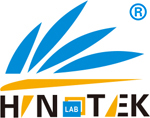Flame Photometer Calibration: Principles, Procedures, and Best Practices
In scientific research, environmental monitoring, and industrial production, flame photometers serve as critical analytical instruments for determining the content of alkali metal elements such as potassium and sodium in samples. Their working principle relies on the excitation of target elements in a flame to generate spectral lines at specific wavelengths. These spectral line intensities are measured using a photoelectric detector to achieve quantitative elemental analysis. However, factors such as instrument wear, environmental fluctuations, and improper operation can gradually degrade measurement accuracy. Therefore, regular calibration of flame photometers is essential. This article provides an in-depth exploration of calibration principles, procedures, key considerations, and common troubleshooting strategies, offering users a comprehensive and practical calibration guide.
- Calibration Principles
Flame photometer calibration primarily depends on standard solutions containing known concentrations of target elements. By measuring the spectral signals generated by these solutions and comparing them with theoretical values, the instrument’s operational state can be evaluated and adjusted to ensure measurement accuracy. Key parameters addressed during calibration include:
- Sensitivity
- Linear range
- Zero drift
- Repeatability
- Calibration Procedures
- Preparations
- Standard solution preparation: Accurately prepare a series of standard solutions with concentration gradients tailored to calibration requirements. These solutions must exhibit stability, homogeneity, and a concentration range covering expected sample levels.
- Instrument preheating: Power on the flame photometer and allow it to stabilize according to the manufacturer’s instructions to ensure measurement consistency.
- Environmental checks: Verify laboratory conditions, including temperature, humidity, and gas supply stability (e.g., fuel and oxidizer), to minimize external interference.
- Zero Calibration
Use a pure solvent (e.g., water or a blank solution) as the zero-calibration reference. Set the baseline via the instrument interface to eliminate background noise and non-specific responses.
- Sensitivity and Linearity Calibration
- Measure standard solutions across the prepared concentration range and record spectral signal intensities.
- Plot a calibration curve (signal intensity vs. concentration). An ideal linear relationship indicates proper instrument sensitivity and linearity.
- Adjust parameters (e.g., flame type, gas flow rate, photomultiplier gain) to optimize the calibration curve’s linearity.
- Repeatability Testing
Perform repeated measurements on one or more standard solutions to assess instrument repeatability. Consistent results indicate stable performance.
III. Key Considerations
- Standard solution handling: Use high-purity reagents, store solutions properly to avoid contamination or degradation.
- Operational compliance: Strictly follow manufacturer guidelines and calibration protocols.
- Environmental control: Maintain stable laboratory conditions during calibration.
- Documentation: Thoroughly record all calibration data and parameters for future reference.
- Common Issues and Solutions
- Reduced sensitivity:
- Causes: Aging photomultiplier tubes, unstable flame conditions, or insufficient gas supply.
- Solutions: Replace tubes, adjust flame parameters, or inspect gas systems.
- Nonlinear calibration curves:
- Causes: Inaccurate standard solutions, instrument nonlinearity, or interference.
- Solutions: Re-prepare solutions, adjust parameters, or identify interference sources.
- Zero drift:
- Causes: Internal contamination, temperature fluctuations, or low-purity gases.
- Solutions: Clean the instrument, stabilize temperature, or use higher-purity gases.
- Conclusion
Calibration is pivotal for maintaining flame photometer accuracy. By adhering to systematic procedures, rigorous protocols, and prompt troubleshooting, users can enhance instrument performance and ensure reliable data for research and industrial applications. Continuous learning and practical expertise in flame photometry will further empower professionals to meet evolving scientific and production demands.
Note: The translation preserves technical accuracy while optimizing readability for an English-speaking audience. Key terms (e.g., “flame photometer,” “calibration curve”) are standardized to align with industry terminology.

